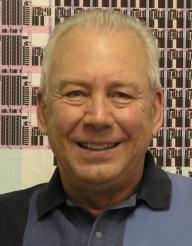- unknown (b.)
Bio/Description
A prolific architect and designer of innovative computing and communication systems, many of which have exploited concurrency and parallelism at the forefront of technology, he is known for creating new disciplines of digital-system design and for instilling these approaches in a generation of students and co-workers, many of whom have themselves become leaders in distributed, concurrent, and parallel computing. His 1992 election to the National Academy of Engineering was with the citation, "for pioneering contributions to the design of asynchronous and concurrent computing systems." His fascination with digital-system design and with asynchronous and concurrent systems began in the 1960s at the Massachusetts Institute of technology (MIT) where he earned his S.B., S.M., and Ph.D. degrees in Electrical Engineering. He recalls that, "While a student, I sought out every opportunity, whether in M.I.T. research projects or through consulting, to design logic. The logic components of that time were expensive, whereas my experience was slight, so it was difficult to persuade people to let me design these systems." Many of these early projects were special-purpose computers for processing graphical, image, or spatial data applications that could employ parallel-pipeline organizations. These projects included experimental mobility aids and reading machines for the blind, the Associated Press's wirephoto-translation computer, and the Harvard 3-D display. While a graduate student at M.I.T., he taught courses in switching and automata theory, was instrumental in establishing the digital-system project laboratory courses, and received the M.I.T. Goodwin Medal "for conspicuously effective teaching." His Ph.D. thesis provided a mathematical foundation for asynchronous logic capable of accepting concurrent input signals, and helped to expose the fundamental problems of mutual exclusion and of synchronizing signals to a free-running clock. After graduating in 1971, he joined the faculty at the University of Utah as Assistant Professor of Computer Science, and worked at the newly founded Evans & Sutherland Computer Corporation to design pipelined display processors. In 1977 he moved to California to work for Burroughs, where he pioneered digital video techniques of aperture filtering for character and geometric display. In 1977, he joined the Computer Science faculty at California Institute of technology (Caltech), in Pasadena, California, where his research and teaching activities were in the areas of microelectronic chip design and concurrent computing. In his concurrent-computing research, principally under DARPA sponsorship, he and his students developed the first multicomputer, the Cosmic Cube; devised the key programming and packet-routing techniques for the second-generation multicomputers; and transferred these technologies to industry. The Intel Paragon and Cray T3D/E employ message-passing techniques licensed from his Caltech patents. In 1994, he and his Caltech research team, along with two researchers from another DARPA-sponsored research project at USC Information Sciences Institute founded Myricom, Inc., a company dedicated to making the high- performance interconnect used in multicomputers available as a commodity product. Myrinet, a gigabit-per-second packet communication and switching technology, is a direct descendent of multicomputer message-passing networks, but without restrictions on link distance or network topology. Myrinet is now used in 15 countries at more than 130 customer sites, including most of the world's premier cluster-computing installations. The multicomputer architecture lives on today in these "clusters" of commodity workstations and PCs, used both for scientific and database applications. Myricom's other principal market for Myrinet products is embedded systems, used typically for signal and image processing in military and industrial-control applications. He resigned as President and CEO of Myricom in August 2010 and currently focuses on research and writing. His articles have appeared in more than 50 publications, and he holds 13 patents. In spite of the demands of a rapidly growing young company, he continues to maintain close ties with his research and academic colleagues, and to perform public service, such as serving on the Computer Science and Telecommunications Board of the National Research Council. In 1992, he was inducted into the National Academy of Engineering and he is the recipient of the 2011 Seymour Cray Computer Engineering Award, "For innovations in high-performance message passing architectures and networks."
-
Noted For:
Co-developer of the first multicomputer, the Cosmic Cube; devising the key programming and packet-routing techniques for the second-generation multicomputers -
Category of Achievement:
-
More Info:


